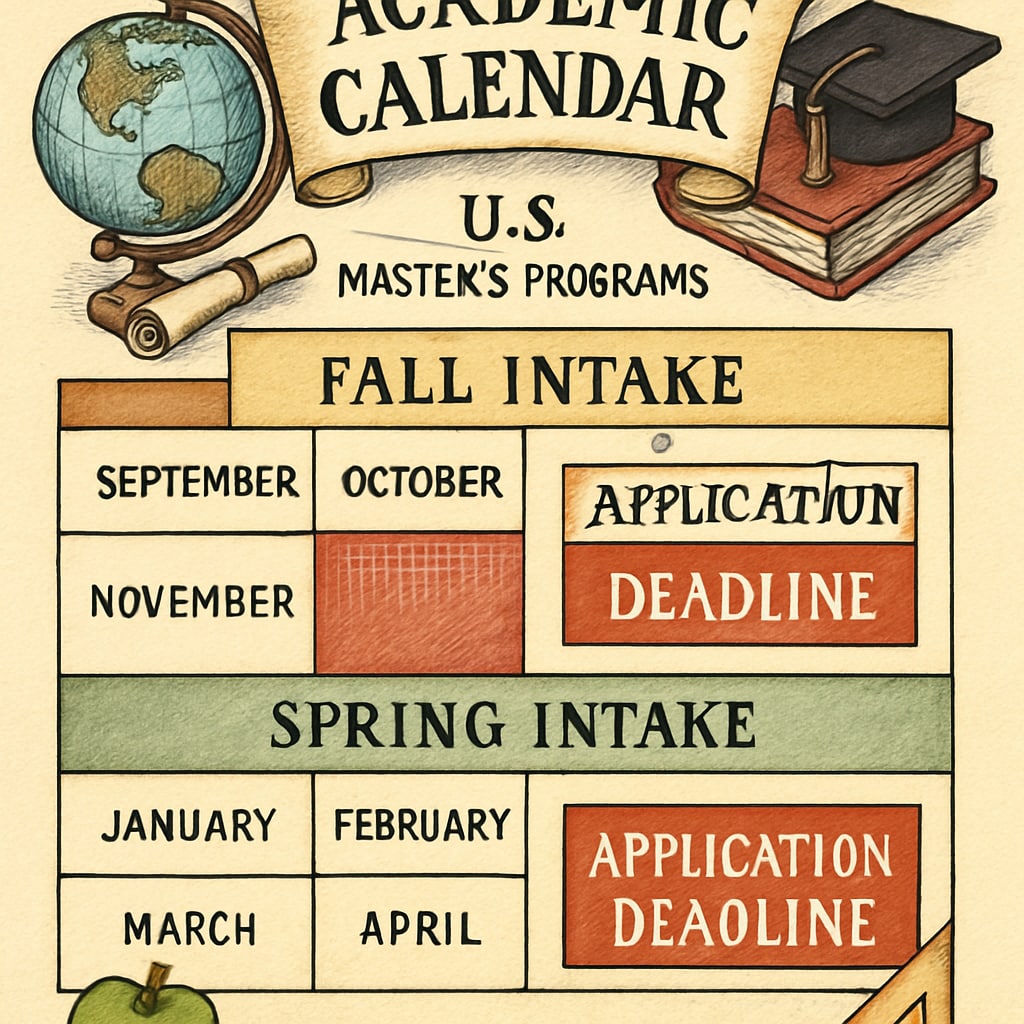When it comes to pursuing higher education abroad, understanding the right timing for U.S. master’s applications is essential. The process involves careful planning, as the timing of your application can significantly influence your chances of acceptance. This article delves into the ideal application windows, evaluates the advantages and disadvantages of different timeframes, and provides actionable strategies to enhance your chances of success. Whether you’re targeting Fall or Spring admissions, this guide will help you navigate the nuances of applying to U.S. master’s programs.
The Importance of Timing for U.S. Master’s Applications
The timing of your U.S. master’s application plays a pivotal role in determining your admission outcomes. Most U.S. universities offer two primary intakes: Fall (August–September) and Spring (January). Each intake has its own characteristics, and understanding them can help you align your application with your academic and career goals.
Fall Intake: The Fall intake is the most popular option, with a majority of programs offering admissions during this period. It provides access to a wider range of courses, financial aid opportunities, and on-campus jobs. However, because of its popularity, the competition is also higher.
Spring Intake: The Spring intake is less common but still offers opportunities for certain programs. It may be a good option for students requiring additional preparation time. However, some courses or scholarship opportunities might not be available during this period.
Choosing the right intake depends on factors such as program availability, financial considerations, and your personal readiness. For example, application deadlines for Fall intake usually fall between December and March, while Spring deadlines are typically between July and October of the preceding year.

Strategies to Optimize Your Application Timeline
To maximize your chances of success, it’s crucial to plan your application timeline strategically. Here are some actionable tips to help you stay ahead of the competition:
- Start Early: Begin researching programs at least 12–18 months before your intended application deadline. Early planning allows you to gather necessary documents, such as transcripts and recommendation letters, without last-minute stress.
- Take Standardized Tests: Most U.S. master’s programs require GRE or GMAT scores. Aim to take these tests at least 6–8 months before the application deadline, leaving room for retakes if needed.
- Tailor Your Statement of Purpose: Customize your personal statement for each program, emphasizing your unique qualifications and alignment with the program’s goals.
- Leverage Early Action or Rolling Admissions: Some universities offer early action or rolling admissions, which can increase your chances of acceptance. These options are ideal for applicants who are well-prepared and ready to submit their materials ahead of others.
In addition to these strategies, staying informed about changes in admission requirements or deadlines is key. For instance, some universities have adopted test-optional policies in recent years, which can influence your preparation priorities.

Evaluating the Feasibility of Applying to U.S. Master’s Programs
While the idea of pursuing a master’s degree in the U.S. is exciting, it’s important to assess its feasibility based on your academic background, financial resources, and career aspirations. Here are some considerations:
- Financial Planning: U.S. tuition fees can be significant. Research scholarship opportunities, assistantships, and external funding options to reduce your financial burden.
- Program Fit: Evaluate whether the program aligns with your academic interests and career goals. Reach out to alumni or faculty for insights.
- Visa Requirements: Ensure you understand the visa application process and timeline. The F-1 visa is the most common type for international students.
- Post-Graduation Opportunities: Investigate the job market and Optional Practical Training (OPT) opportunities for international students in your field of study.
By addressing these factors, you can determine whether pursuing a U.S. master’s degree is the right choice for you. For further information on visa requirements, refer to the F-1 Visa Guide.
Conclusion: Preparing for Success
Applying for a U.S. master’s program is a significant step that requires careful planning and preparation. By understanding the importance of timing, utilizing effective strategies, and evaluating the feasibility of your plans, you can enhance your chances of success. Whether you aim for the Fall or Spring intake, staying organized and proactive will help you navigate the application process seamlessly. Begin your journey early, and you’ll be well-positioned to achieve your academic and career aspirations in the U.S.
Remember, the key to success lies in preparation. Start early, stay informed, and make the most of every opportunity to ensure your application stands out.


